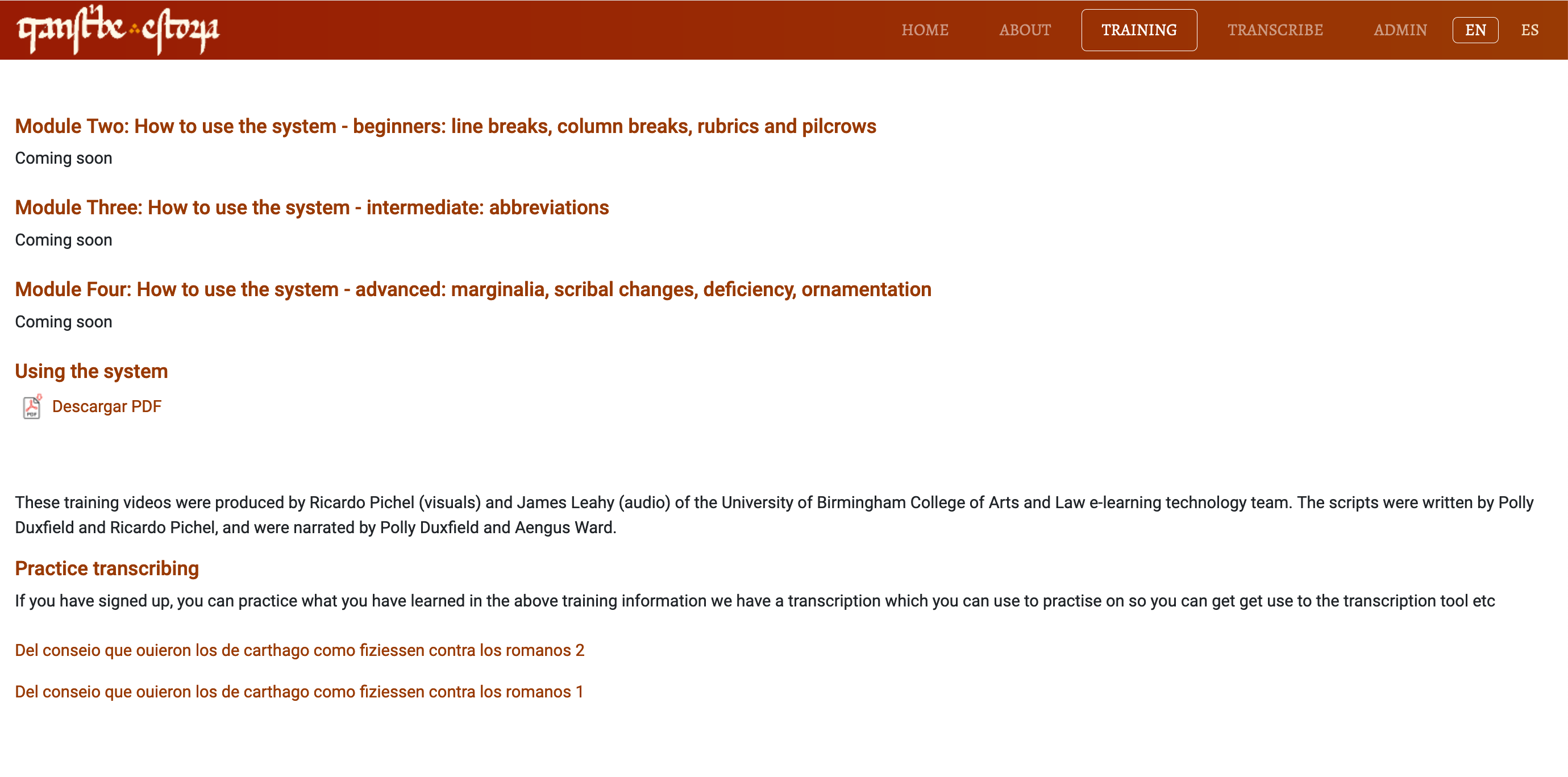Today, we launch the signup process at our research and public engagement project Transcribe Estoria.
From today, you can sign up to explore the world of medieval manuscripts, and Alfonso el Sabio’s great history of Spain, the Estoria de Espanna, composed around the year 1270. On the project website, you will have access to a transcription desk which will allow you to type the text of the manuscript in the image pane on the left of the screen.

There is no computer code to learn; all you do is type what you see!
From today, you have access to the first of four training videos explaining the principles of medieval writing, a short guide to how the system works, and a set of informative links about the Estoria and Alfonso. There is also a short text at the bottom of the Training page which will allow you to practice using the system and which you can use to begin to practise reading this beautiful manuscript: click on the link “Del conseio…” 1 or 2 and have a go!

We will release the three other training modules next week.
Then, over 10 weeks from 2nd October, we will transcribe together five sections of the Estoria – the texts for transcription will be available as follows:
- October 2nd: Julius Caesar and the founding of the city of Seville
- October 16th: Hadrian: the Spanish emperor
- October 30th: Empress Helena and the finding of the True Cross
- November 13th: The origins of Islam
- November 27th: Fall and redmption – the beginnings of Christian Spain
These passages are relatively short – so we would like you to have a go at transcribing them. As we release the passages, we will also provide you with additional information about them through blog posts and social media, and we would like you to participate in this – tell us what you think and get a debate going over Spain’s past, the medieval world, manuscript culture or anything that strikes you of interest. You can contribute here to this blog, to our Twitter feed @EstoriadEspanna or on our Facebook page.
Our project aims to engage a wider public in the study of medieval Iberia and manuscript culture. But it is also linked to a wider research project, the Estoria de Espanna Digital, and here you can help us with our research. We aim in due course to transcribe all of the manuscripts of the Estoria so they can all be searched digitally and related to each other. If you would like to help with this, the rest of the manuscript will be available to transcribe here too. Do as much or as little as you can – every bit helps. We’ll tell you more about this as the weeks go by.
Most of all though: enjoy your time with us in the fascinating world of medieval history and beautiful manuscripts!
Aengus Ward, Ricardo Pichel Gotérrez and Polly Duxfield
University of Birmingham

This sounds exciting! I’m a retired person with Spanish ancestry by way of Mexico and I’d like to learn more about this.
You are very welcome here Emily! We hope you enjoy the transcription and discussion of the past.
This sounds fascinating! I have a Ph.D in musicology, and my dissertation was “Orate and Literate Rhythm in the Music of Adam de la Halle: the evidence of the manuscript Paris, Bib.nat. 255667.”
Hi Dorothy,
Welcome! You’ll be right at home in Alfonso’s reign (1252-84) then!
Hi everyone! I’m a graduate of UNM and TCD and I’m trying to start a career (or PhD) in MS studies. At the moment I’m transcribing TCD MS 11500 in my free time, and I want to publish an edition & translation of it someday. I don’t know too much about medieval Spain, which is a bit embarrassing because I’m from New Mexico, so I’m very eager to learn more!
Hi Bryna, great to see you here. I hope this helps with your own transcribing. Maybe you can tell us about the similarities and differences you find in due course?